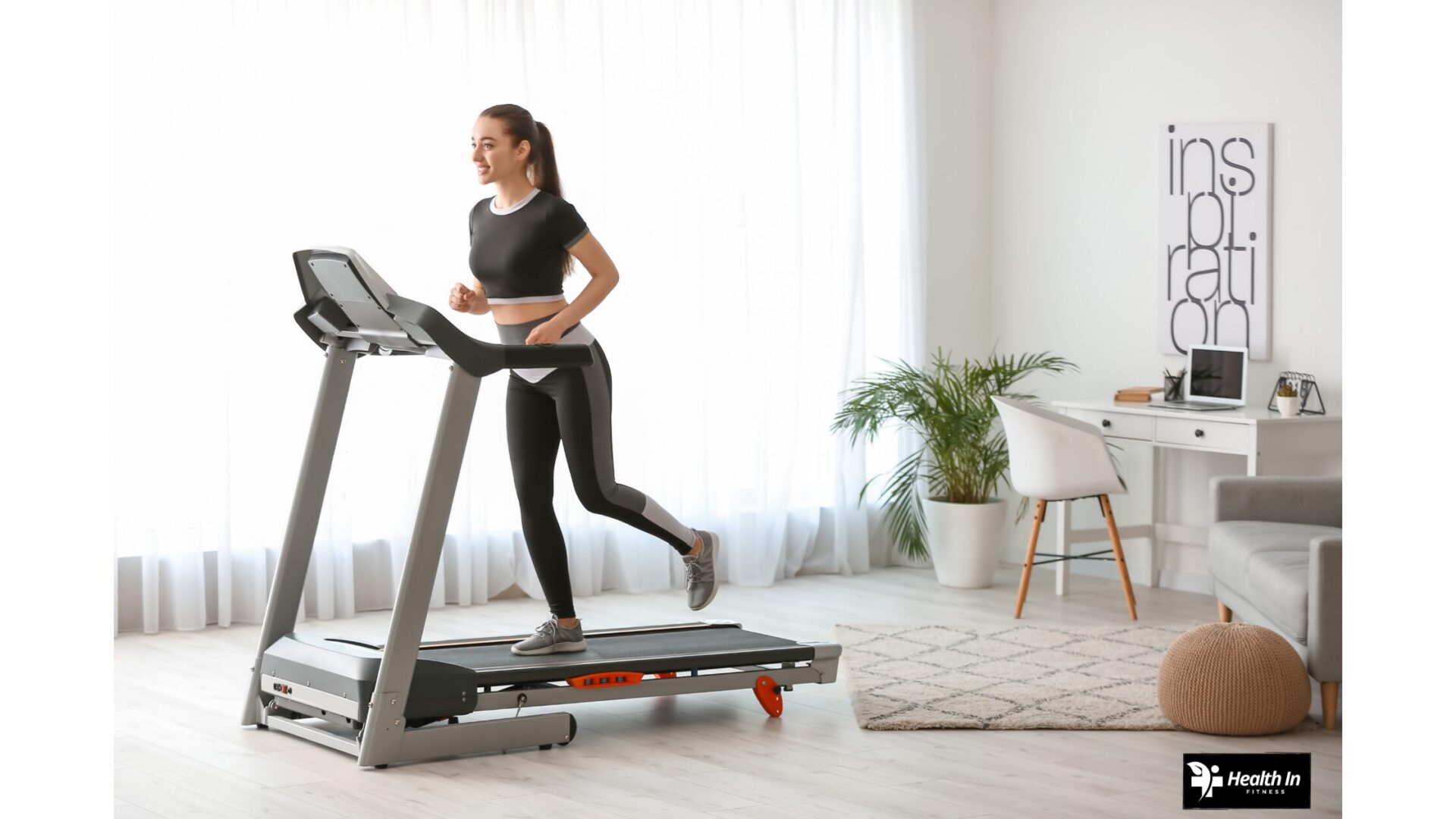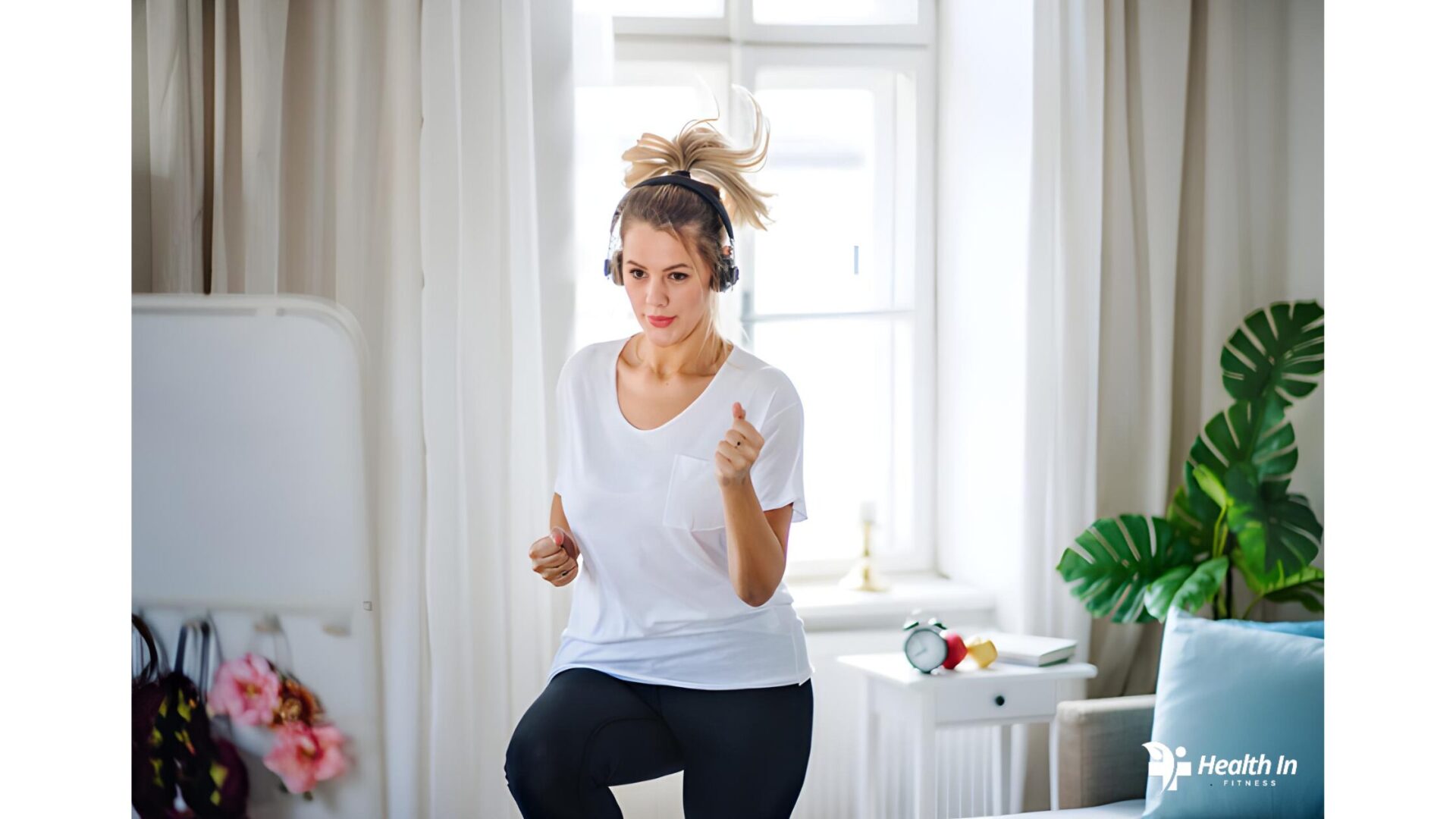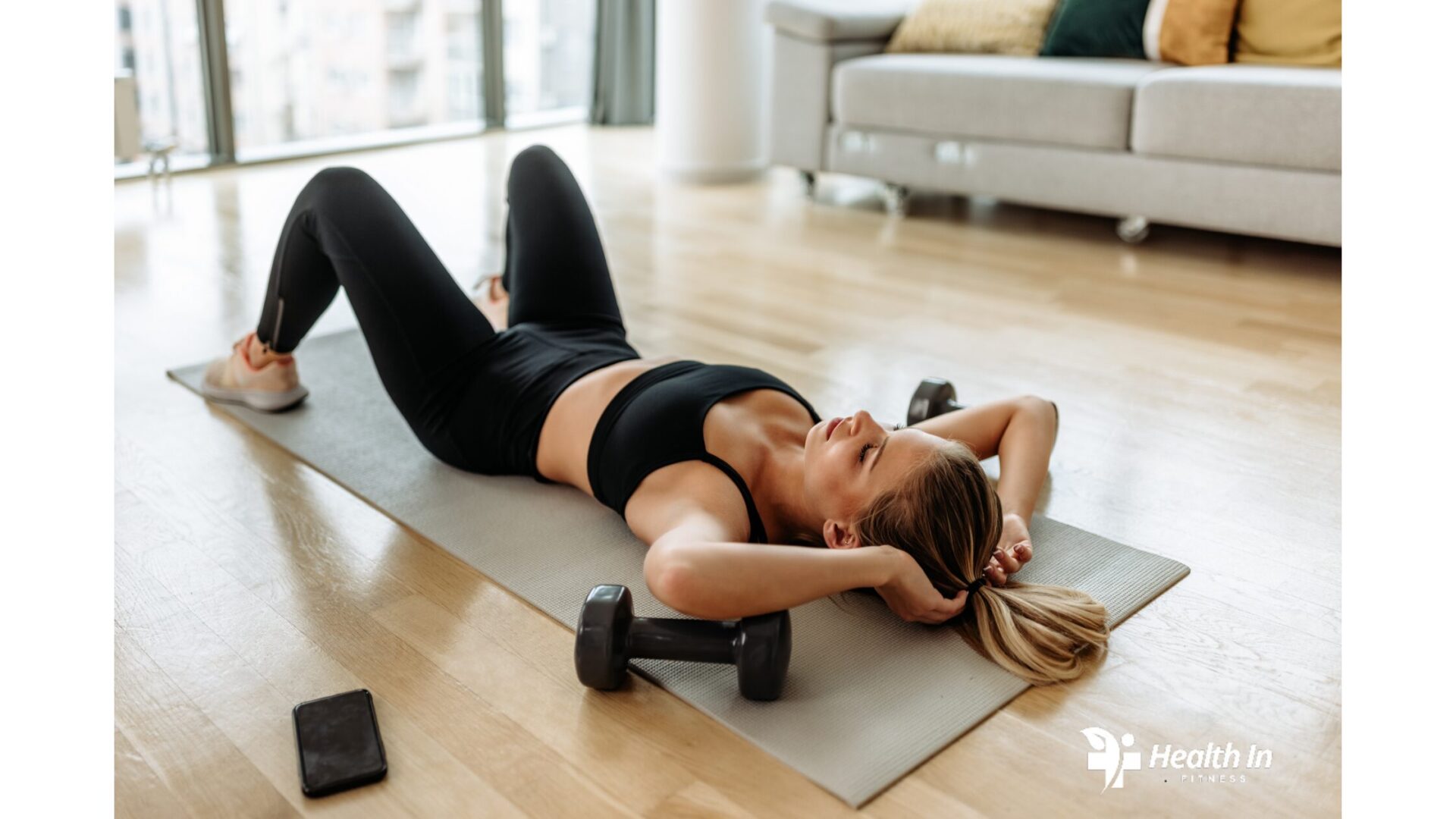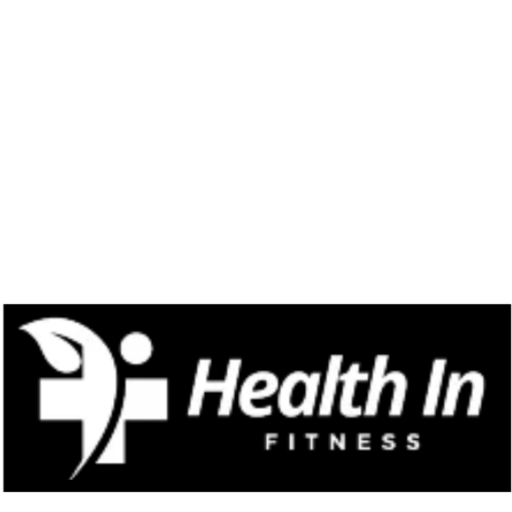Staying motivated in your fitness journey can be challenging. No matter how enthusiastic you are when starting out, there are moments when life, stress, or even a plateau can make it difficult to keep going. However, understanding the keys to motivation and having a strong foundation of habits can help you stay on track for the long term. In this post, we’ll explore proven strategies to help you maintain your fitness journey and make it an integral part of your life.
Table of Contents
How to Stay Motivated in Your Fitness Journey
- Why Motivation is Crucial in Fitness
- Setting Clear and Realistic Fitness Goals
- The Power of Habit in Staying Motivated
- Overcoming Obstacles and Plateaus
- Creating Accountability for Long-Term Success
- Leveraging Technology to Stay on Track
- The Role of Nutrition in Your Motivation and Energy Levels
- Incorporating Fun and Variety into Your Workouts
- Mental Health Benefits: How Fitness Improves More Than Just Your Body
- Building a Support System for Ongoing Encouragement
- Conclusion: Motivation is a Journey, Not a Destination
1. Why Motivation is Crucial in Fitness: How to Stay Motivated in Your Fitness Journey
Motivation is the driving force that keeps you working toward your goals, especially when the going gets tough. Without a clear sense of why you’re pursuing fitness, it’s easy to give up when challenges arise. Whether your fitness journey is focused on weight loss, muscle gain, or overall well-being, motivation will help you stay consistent, even when external factors try to throw you off course.
A. Motivation Fuels Consistency
Consistency is key to success in fitness, and motivation helps fuel that consistency. The more motivated you are, the more likely you are to stick to your routine, even when you don’t feel like working out.
B. Long-Term vs. Short-Term Motivation
It’s essential to distinguish between short-term motivation, which may come from external sources like a fitness challenge or an event, and long-term motivation, which is rooted in your deeper desires and lifestyle goals. Both are important, but focusing on long-term motivation is crucial for sustaining your fitness journey.
C. Building Discipline Alongside Motivation
While motivation can fluctuate, discipline serves as the foundation. The goal is to cultivate a balance where motivation keeps you excited and engaged, while discipline ensures you stay on track even on the days when your motivation wanes.
2. Setting Clear and Realistic Fitness Goals
One of the most important steps in staying motivated during your fitness journey is to set clear, specific, and realistic goals. When you know exactly what you’re working toward, it’s easier to stay focused and motivated. Whether you want to lose weight, gain muscle, increase flexibility, or improve your cardiovascular health, your goals should be:
A. Specific
A vague goal like “getting fit” can be hard to track and measure. Instead, focus on something specific, like “losing 10 pounds,” “running a 5K,” or “increasing my squat by 20 pounds.” This allows you to track progress and celebrate small wins along the way.
B. Measurable
It’s important that your goals are measurable so you can objectively track your progress. Whether it’s the amount of weight you’ve lifted or the distance you’ve run, make sure you can quantify your goals.
C. Attainable
While it’s good to dream big, your goals should also be realistic. Setting unattainable goals can lead to frustration and disappointment, which can kill your motivation. Start small and gradually build your way up.
D. Time-Bound
Set a time frame for achieving your goals. Having a deadline will give you a sense of urgency and keep you focused. However, be flexible with your timeline. If you hit a roadblock, adjust your time frame rather than giving up on the goal.
E. Rewarding Yourself for Reaching Milestones
Rewarding yourself for reaching small milestones can help maintain motivation. Whether it’s buying new workout gear, enjoying a healthy treat, or treating yourself to a massage, rewarding your hard work keeps the journey enjoyable.
3. The Power of Habit in Staying Motivated
Motivation gets you started, but habits keep you going. When you make fitness a part of your daily routine, it becomes second nature, and you don’t have to rely solely on motivation to get you to the gym or on the running track.
A. Creating a Fitness Routine
One of the best ways to ensure consistency is by creating a set routine. Whether you work out in the morning, afternoon, or evening, sticking to a regular schedule makes it easier to maintain long-term.
B. Starting Small and Building Gradually
Begin with simple, manageable habits like walking 10 minutes a day or doing a short workout. As these habits become second nature, gradually build on them by increasing the intensity or duration.
C. Stacking Habits
A habit-stacking approach links a new habit with an existing one. For example, if you have a routine of making coffee every morning, you could do a few stretches or a 5-minute bodyweight workout while the coffee brews. Over time, these small actions compound, leading to significant fitness improvements.
D. Focus on the Process, Not Just the Outcome
Rather than obsessing over the end goal, focus on the daily actions that will get you there. By developing a love for the process—whether it’s the workouts, the feeling of accomplishment, or the energy boost—your motivation will naturally follow.
4. Overcoming Obstacles and Plateaus
Every fitness journey includes obstacles, setbacks, and plateaus. The key to staying motivated is learning how to navigate these challenges without losing sight of your goals.
A. Recognizing Plateaus and Adjusting
Plateaus are a natural part of any fitness journey, but they can be discouraging. If you notice that you’re no longer progressing, it might be time to switch things up. Vary your workouts, increase the intensity, or try a new type of exercise to push through the plateau.
B. Managing Injury and Fatigue
Injuries and fatigue are common setbacks, but they don’t have to derail your progress. If you’re injured, focus on recovery and find alternative exercises that don’t exacerbate your condition. Fatigue can often be managed by adjusting your workout intensity, getting enough sleep, and ensuring you’re eating properly.
C. Embracing Rest Days
Rest and recovery are crucial components of any fitness plan. Without adequate rest, you risk burnout, which can lead to a loss of motivation. Scheduling rest days allows your body to recover, repair, and grow stronger, which, in turn, helps you stay motivated to continue.
D. Mental Resilience and Positive Thinking
Your mindset plays a critical role in overcoming obstacles. When faced with challenges, practice positive self-talk and remind yourself of your “why.” This mental resilience will help you push through difficult times and stay on track.
5. Creating Accountability for Long-Term Success: How to Stay Motivated in Your Fitness Journey
Accountability is one of the most powerful tools for staying motivated. When others are involved in your fitness journey, it becomes harder to slack off or give up.
A. Workout with a Partner
Finding a workout partner not only makes exercise more fun but also adds an element of accountability. If someone is counting on you to show up for a workout, you’re less likely to skip it.
B. Hire a Personal Trainer
A personal trainer can provide expert guidance, but they also hold you accountable for your workouts and progress. They can help you push through plateaus and keep you focused on your goals.
C. Join a Fitness Class or Community
Joining a fitness class or online community can help create a sense of belonging and accountability. Whether it’s a yoga class, spin session, or a virtual fitness group, being part of a community of like-minded individuals can help you stay motivated and committed to your goals.
D. Use Fitness Apps and Trackers
There are numerous fitness apps and devices that can help you track your progress and stay accountable. Many apps allow you to share your progress with friends or compete in fitness challenges, which can help boost motivation.
6. Leveraging Technology to Stay on Track
Technology has transformed the way we approach fitness, providing tools and resources to enhance motivation and track progress.
A. Fitness Trackers
Wearable fitness trackers, such as Fitbits or Apple Watches, allow you to monitor your daily activity levels, track workouts, and set fitness goals. These devices provide real-time feedback and help you stay accountable.
B. Mobile Apps for Fitness
From workout programs to nutrition tracking, fitness apps offer an all-in-one solution for staying motivated. Apps like MyFitnessPal, Strava, and Nike Training Club provide customized workout plans, community support, and progress tracking.
C. Virtual Fitness Classes
The rise of virtual fitness classes makes it easier than ever to stay motivated from the comfort of your own home. Whether it’s yoga, HIIT, or dance, there’s a virtual class for everyone, and many offer live sessions for added accountability.
7. The Role of Nutrition in Your Motivation and Energy Levels
Nutrition plays a vital role in how motivated and energized you feel throughout your fitness journey. Without the right fuel, your body—and your motivation—will suffer.
A. Fueling Your Body with the Right Foods
Eating a balanced diet rich in whole foods, including lean proteins, complex carbohydrates, and healthy fats, will give your body the energy it needs to perform at its best.
B. Pre-Workout and Post-Workout Nutrition
Consuming the right foods before and after your workout can enhance your performance and recovery. A pre-workout meal should focus on easily digestible carbohydrates, while a post-workout meal should include both protein and carbs to promote muscle repair and replenish energy stores.
C. Hydration for Performance and Motivation
Dehydration can lead to fatigue, making it harder to stay motivated. Ensure that you’re drinking plenty of water throughout the day, especially before and after workouts.
D. Supplementation
If you’re struggling with energy levels or recovery, certain supplements like protein powders, BCAAs, or multivitamins can help. However, it’s always best to consult with a nutritionist or doctor before adding supplements to your routine.
8. Incorporating Fun and Variety into Your Workouts
One of the main reasons people lose motivation in their fitness journey is boredom. Doing the same workout day in and day out can quickly become monotonous.
A. Try New Activities
Switch things up by trying new activities or exercises. This could be anything from trying a new sport, taking a dance class, or incorporating swimming into your routine.
B. Challenge Yourself with New Goals
Set mini-challenges within your fitness routine to keep things exciting. This could include training for a race, trying to hit a new personal record, or mastering a new yoga pose.
C. Music and Playlists
Music can make a significant difference in how motivated you feel during your workout. Create high-energy playlists that pump you up and keep you moving.
9. Mental Health Benefits: How Fitness Improves More Than Just Your Body
While the physical benefits of exercise are well-known, the mental health benefits are just as important, if not more so. Exercise has been shown to:
A. Reduce Stress and Anxiety
Regular physical activity reduces the levels of cortisol (the stress hormone) in your body, which can help alleviate feelings of stress and anxiety.
B. Boost Mood and Self-Esteem
Exercise releases endorphins, which are chemicals in your brain that improve your mood and give you a natural “high.” This boost in mood can help keep you motivated and positive during your fitness journey.
C. Improve Sleep Quality
A good workout can tire you out physically, which helps promote deeper, more restful sleep. Better sleep improves recovery and energy levels, leading to improved motivation.
10. Building a Support System for Ongoing Encouragement
Finally, staying motivated in your fitness journey often comes down to the people around you. A strong support system can make all the difference in maintaining motivation.
A. Share Your Goals with Friends and Family
Letting others know about your fitness goals can create accountability and encouragement. Whether it’s a friend who checks in on your progress or a family member who joins you for a workout, their support can be invaluable.
B. Seek Out Fitness Communities
Online fitness communities or local workout groups can provide a sense of camaraderie and support. When you’re surrounded by people who share your goals, it’s easier to stay motivated.
11. Track Your Progress and Celebrate Small Wins
Tracking your fitness progress can have a significant impact on your motivation. When you have concrete evidence that you are improving—whether it’s lifting heavier weights, running faster, or simply feeling more energetic—it reinforces the idea that your efforts are paying off. Tracking not only helps you stay focused but also keeps you accountable.
A. The Importance of Progress Tracking
Many people lose motivation because they can’t see immediate results, especially when it comes to fitness. However, progress isn’t just about losing weight or gaining muscle; it’s about the small, incremental changes that happen over time. Keeping track of these changes can help you stay motivated and realize how far you’ve come.
- Fitness Journals: Keep a written or digital journal where you log your workouts, reps, sets, and weight lifted. You can also record how you felt during the workout and any improvements you noticed. Over time, you’ll see patterns of growth, which can keep you inspired.
- Tracking Apps: There are numerous apps available that make tracking your fitness journey easier. Many of these apps can track your workouts, diet, and even sleep patterns. They provide a visual representation of your progress, which can be highly motivating. Some popular options include MyFitnessPal, Strava, and Fitbit.
- Photographic Evidence: Taking progress pictures is another effective way to track physical changes that might not be obvious when you see yourself every day. Compare photos taken at the start of your journey to those taken months later to see your transformation. This is especially useful when the scale doesn’t show much difference, but your body composition has clearly changed.
B. Set Milestones and Celebrate Them
While having a long-term fitness goal is important, breaking that goal into smaller, manageable milestones can help maintain motivation over time. Each milestone represents a step closer to your larger objective, and celebrating these small victories is key to staying positive and driven.
- Weekly or Monthly Check-Ins: Every week or month, assess your progress and adjust your goals as needed. Did you hit a new personal best in weightlifting? Did you stick to your running plan all week? Reflect on your accomplishments, and celebrate each step toward your ultimate goal.
- Non-Scale Victories: Focus on more than just the number on the scale. Can you run longer without getting tired? Are your clothes fitting better? Can you lift heavier weights? These non-scale victories are just as important, if not more so, than numerical results.
- Rewards System: Set up a rewards system for yourself. For example, after consistently working out for a month, reward yourself with something that aligns with your goals, such as new workout clothes or a relaxing spa day. Positive reinforcement helps build a sense of accomplishment and keeps you excited about moving forward.
12. Stay Flexible and Adapt Your Routine
One of the biggest mistakes people make in their fitness journey is being too rigid with their plans. Life happens, and sometimes, your workout schedule won’t go as planned. The key is to stay flexible and not let minor setbacks derail your entire journey.
A. Adjusting Your Workouts as Needed
Maybe you’re traveling, have a busy work schedule, or simply don’t have the energy to stick to your usual routine. Instead of skipping your workout entirely, adapt to the circumstances. There are plenty of ways to maintain your fitness even when life throws a curveball:
- Shorter Workouts: On busy days, instead of skipping your workout, opt for a shorter but high-intensity session. A 20-minute HIIT workout can be just as effective as an hour-long gym session if you push yourself. The key is consistency, not perfection.
- Bodyweight Exercises: If you don’t have access to a gym or equipment, rely on bodyweight exercises like squats, lunges, push-ups, and planks. These exercises can be done anywhere and are great for maintaining strength and cardiovascular fitness.
- Travel-Friendly Workouts: If you’re traveling, pack a resistance band or jump rope for a quick workout in your hotel room. Walking or jogging in new locations is another great way to stay active and explore your surroundings.
B. Listen to Your Body
It’s easy to fall into the trap of pushing yourself too hard, especially when you’re highly motivated. However, it’s essential to listen to your body and recognize when you need rest. Overtraining can lead to burnout, injury, and ultimately, loss of motivation.
- Rest and Recovery: Incorporate regular rest days into your fitness plan. Rest allows your muscles to repair and grow stronger. Without proper recovery, your progress can stall, and you may feel more fatigued, leading to decreased motivation.
- Adapt to Changing Energy Levels: There will be days when you feel tired or less motivated, and that’s perfectly normal. On these days, consider doing a lighter workout or focusing on stretching and mobility exercises. The important thing is to keep moving and stay consistent, even if the intensity of your workout varies.
13. Diversify Your Workouts to Keep Things Interesting
Monotony is one of the main reasons people lose motivation in their fitness journey. Doing the same workout every day can become boring, which may cause you to stop enjoying your fitness routine. The best way to prevent boredom is to keep things fresh by incorporating variety into your workouts.
A. Try New Types of Exercise
Don’t be afraid to explore new forms of physical activity. Experimenting with different types of exercise can reignite your passion for fitness and keep you excited to work out.
- Cross-Training: If you usually run, try adding swimming or cycling to your routine to target different muscle groups and avoid overuse injuries. Cross-training can make your fitness routine more balanced and enjoyable.
- Fitness Classes: Group fitness classes, whether online or in-person, can add a social element to your workout and introduce you to new forms of exercise. Yoga, Pilates, spinning, and kickboxing are just a few examples of classes that can shake up your routine.
- Seasonal Activities: Use the seasons to your advantage. In the summer, take your workout outside with hiking, biking, or paddleboarding. In the winter, try snowshoeing, skiing, or ice skating. Seasonal changes can provide natural variety and make fitness feel more like a fun activity rather than a chore.
B. Mix Up Your Routine with Interval Training
High-Intensity Interval Training (HIIT) is a great way to keep your workouts exciting while maximizing calorie burn and cardiovascular fitness. Alternating between short bursts of intense activity and periods of rest keeps your body guessing and helps you avoid the plateau effect that often comes with doing the same workout repeatedly.
- Example HIIT Routine: For a 30-minute workout, try 30 seconds of sprinting or fast-paced exercise, followed by 30 seconds of rest or slow walking. Repeat this cycle for 20 minutes, followed by a 10-minute cool-down.
- Strength Circuits: Circuit training is another effective way to add variety. Set up 4-6 exercises (such as squats, push-ups, lunges, and burpees) and perform each for 30-60 seconds with minimal rest in between. This keeps your heart rate up and engages multiple muscle groups.
14. Find Inspiration from Others
When motivation is low, finding inspiration from others can be a powerful tool to get back on track. Many people find that reading about the fitness journeys of others, watching motivational videos, or following fitness influencers on social media can reignite their enthusiasm.
A. Follow Fitness Influencers and Communities
Social media can be a great source of motivation if used mindfully. Following fitness influencers who share their workouts, tips, and personal stories can give you new ideas and remind you that progress is possible. Join fitness communities where members share their own achievements, struggles, and encouragement. Surrounding yourself with positive and goal-oriented individuals can create a motivating atmosphere.
- YouTube Channels: Look for fitness YouTube channels that align with your interests and goals. Many YouTubers post free workout videos, tips, and motivational content that can help you stay focused on your journey.
B. Participate in Fitness Challenges
Fitness challenges are an excellent way to set short-term goals and stay motivated. Many fitness apps, gyms, and social media groups offer monthly or weekly challenges, such as completing a set number of steps, minutes of exercise, or specific workouts. Engaging in a challenge gives you a target to work toward and creates a sense of accomplishment when you complete it.
How to Stay Motivated in Your Fitness Journey is a Continuous Process
Staying motivated in your fitness journey is a long-term process that requires continuous effort and reflection. By setting clear goals, creating healthy habits, surrounding yourself with a strong support system, and staying flexible with your approach, you can maintain motivation and achieve your fitness goals. Remember, motivation may fluctuate, but with the right strategies, you’ll be able to keep moving forward on your path to better health and well-being. Learn how to Stay Motivated in Your Fitness Journey.
Support Our Work
If you’ve found this guide on staying motivated in your fitness journey helpful, please consider supporting us by shopping through our Amazon affiliate link. Your purchases help us continue providing valuable content at no additional cost to you. Thank you for your support!
For more tips and strategies on how to stay motivated in your fitness journey, be sure to explore other valuable resources. From expert advice to community support, you’ll find everything you need to keep pushing forward toward your fitness goals. Find more resources here and continue building a healthy and active lifestyle with the motivation and tools to succeed!



